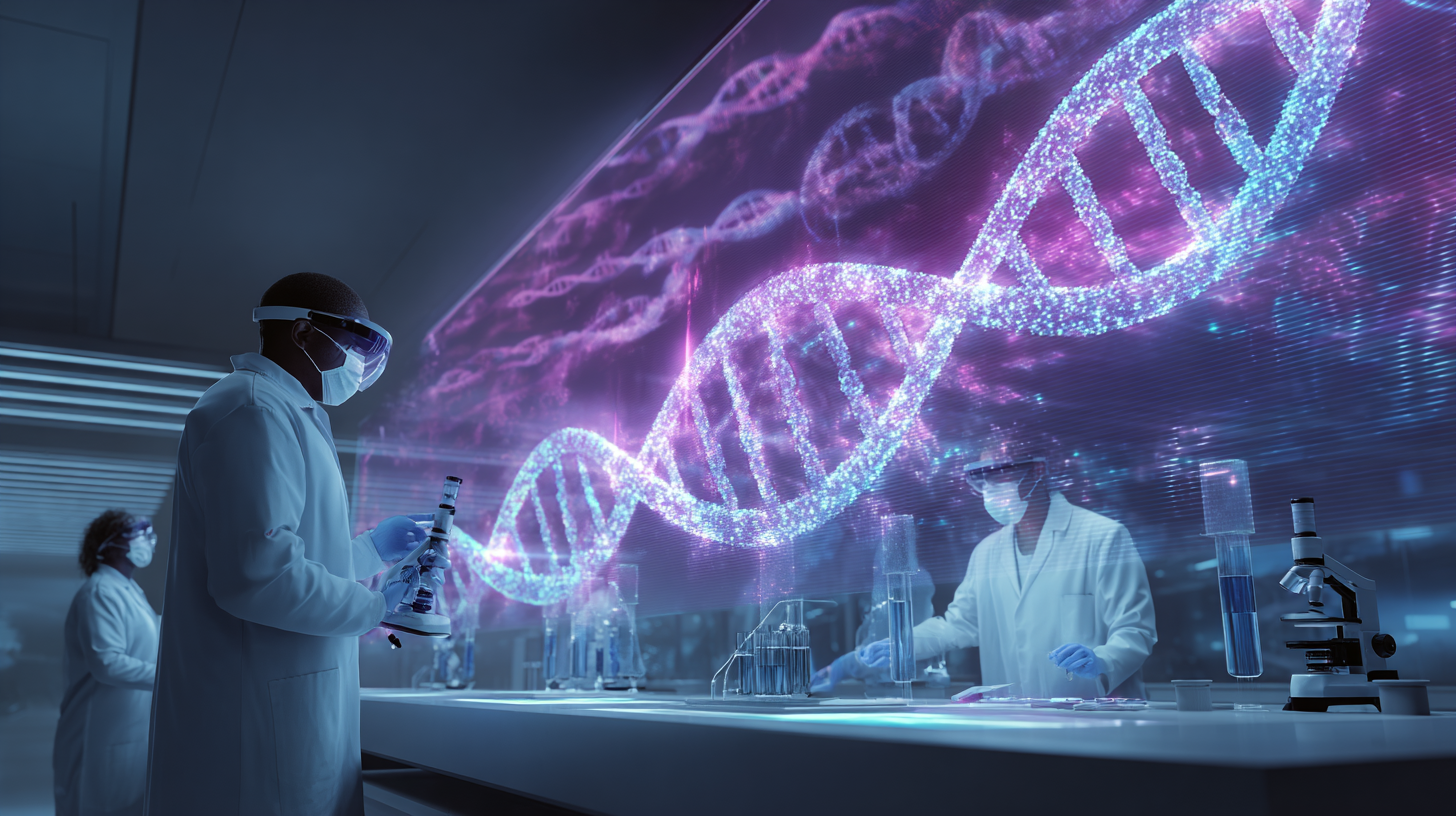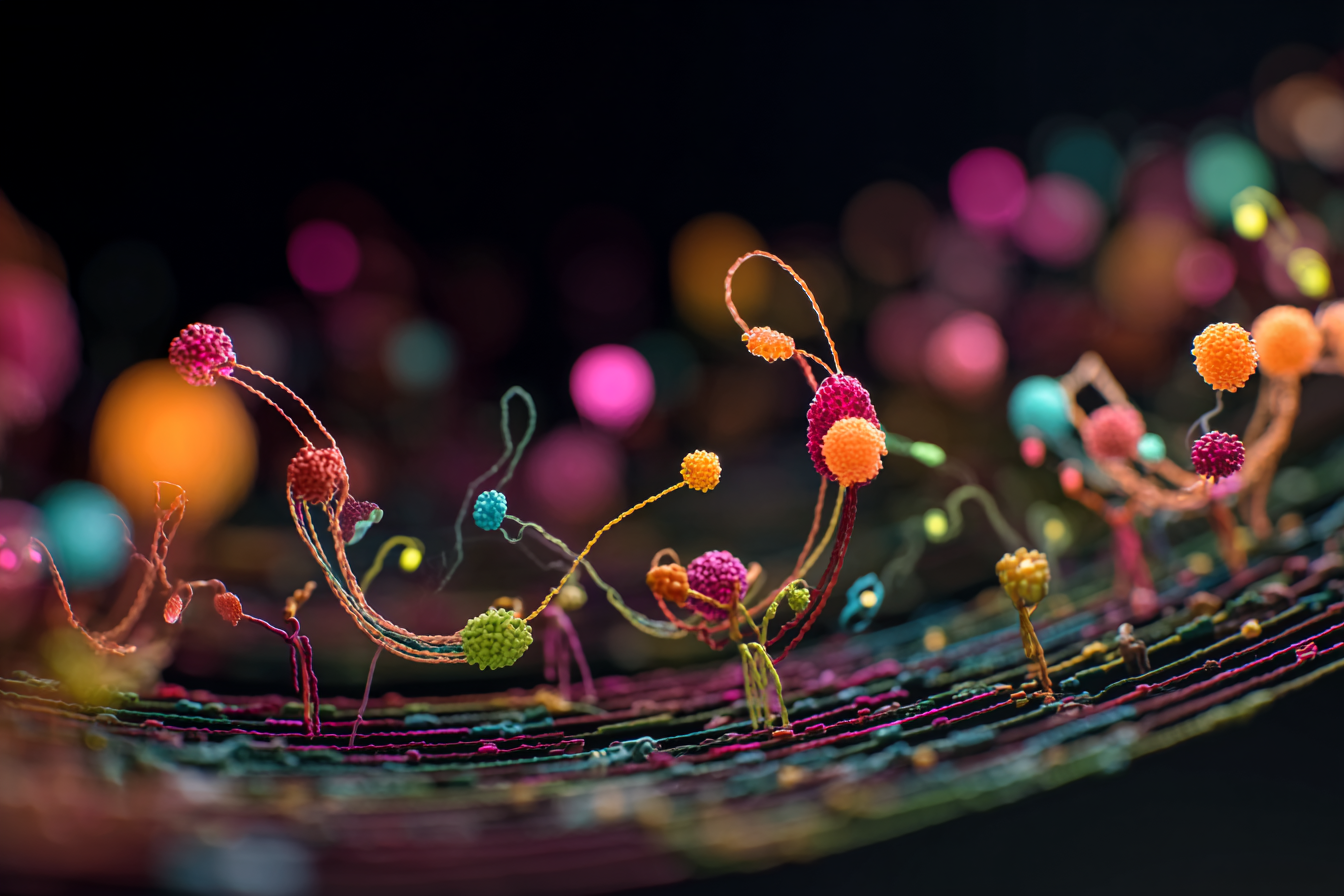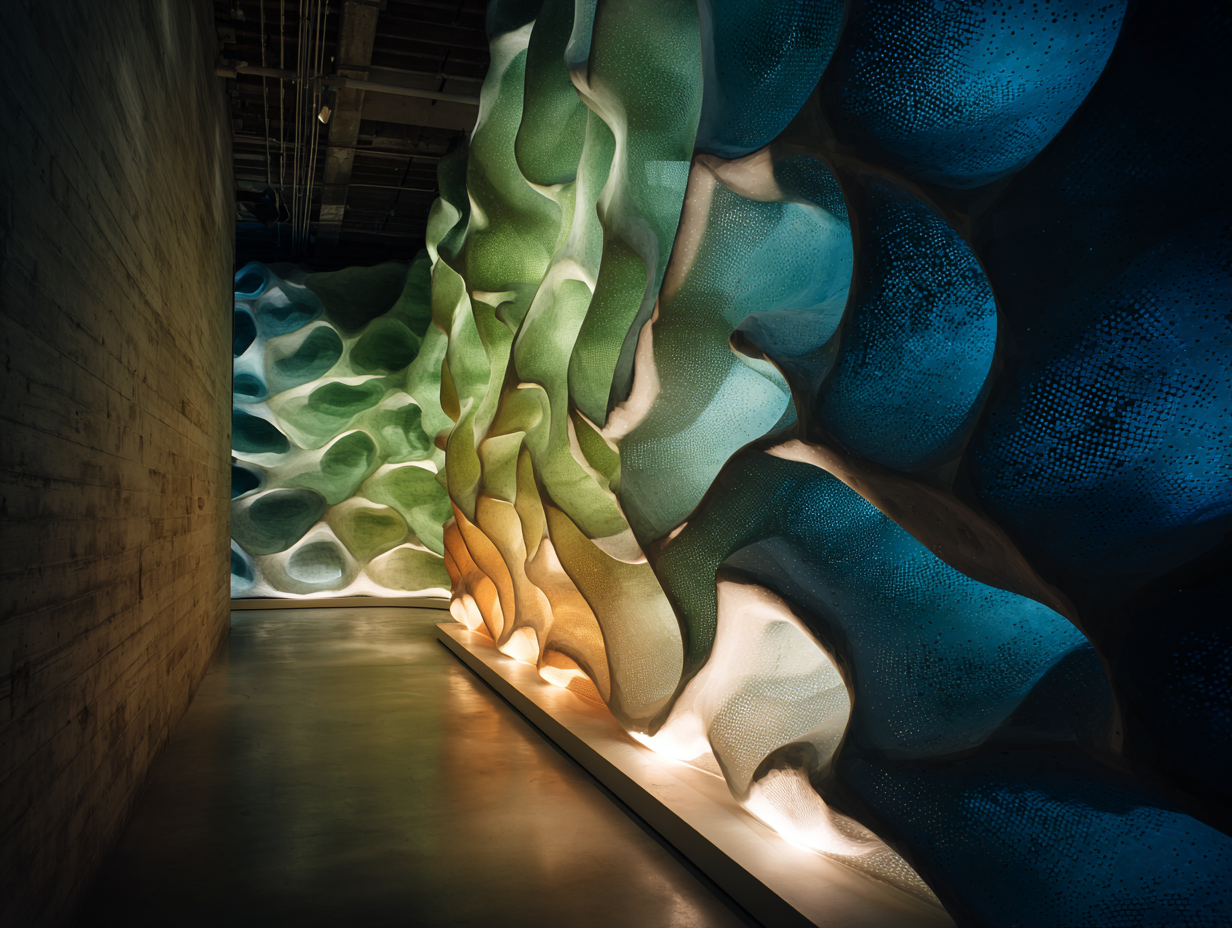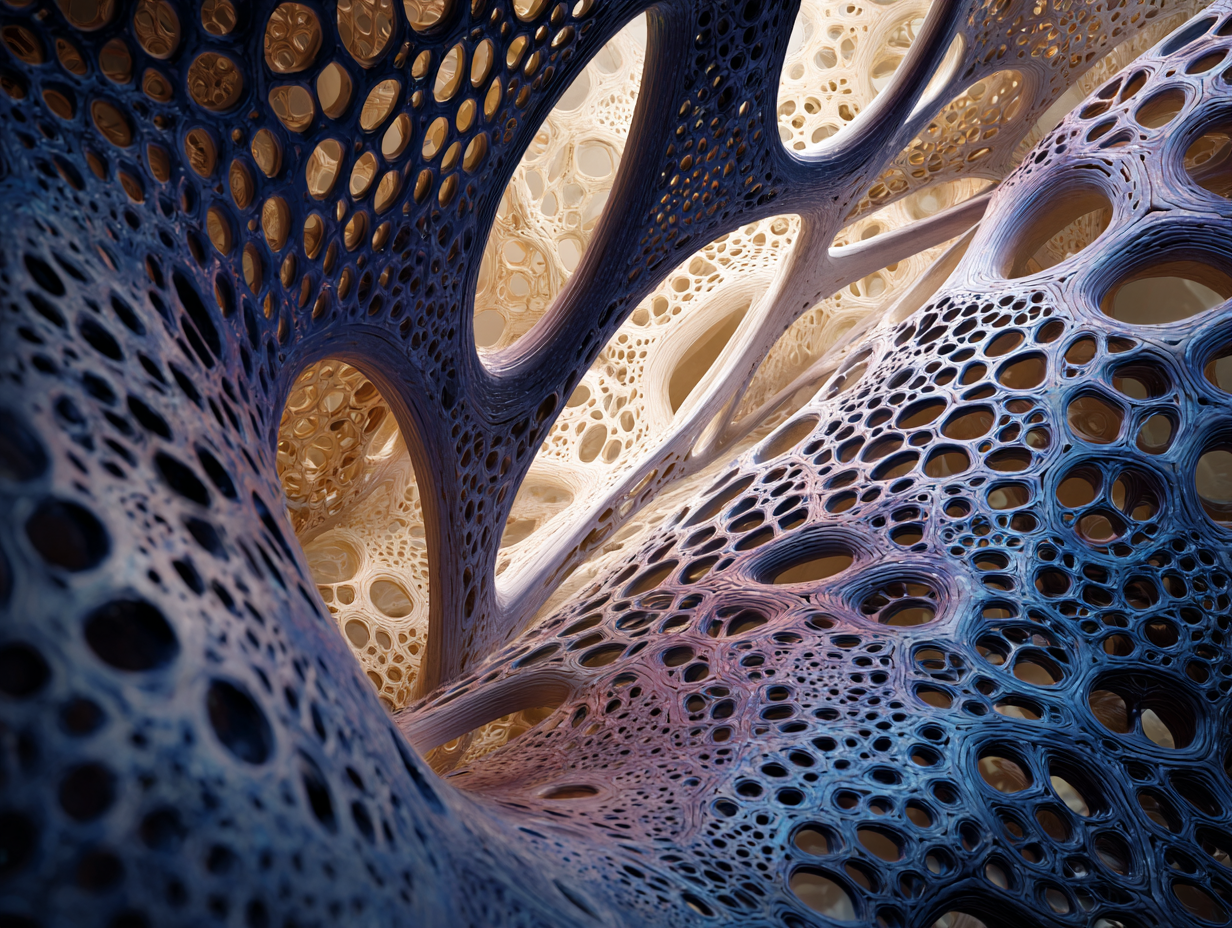Organic Material Fabrication: Growing Technology

Bio-printing with rhythm-programmed cellular assemblies
The Manufacturing Revolution
Traditional manufacturing forces materials into shapes through cutting, molding, and assembly. But nature has perfected a far more elegant approach: programming matter to organize itself into precisely the right structure at exactly the right time.
Organic Material Fabrication harnesses the cellular programming language we’ve discovered - using rhythmic folding instructions to grow technology rather than build it. We’re not just making things differently; we’re teaching materials to make themselves.
Welcome to manufacturing that follows the rhythm of life itself.
The Bio-Programming Foundation
From Assembly Lines to Growth Patterns
Traditional Manufacturing Limitations:
- Static materials require external shaping forces
- Complex assemblies need precise mechanical coordination
- Repairs require disassembly and replacement
- Adaptation requires complete redesign
Bio-Programmed Growth Advantages:
- Materials self-organize following internal rhythmic instructions
- Complex structures emerge naturally from simple cellular programs
- Self-repair happens automatically through biological protocols
- Adaptation occurs in real-time through environmental feedback
The Cellular Assembly Orchestra
Every manufactured structure becomes a living symphony:
- Pattern 3 (40%): Structural framework - load-bearing elements
- Pattern 5 (36%): Flexible joints - movement and adaptation zones
- Pattern 1 (14%): Gentle connections - stress distribution networks
- Pattern 20 (10%): Complex coordination - assembly orchestration
Technical Implementation

Rhythm-Programmed Bio-Printing
The Living 3D Printer Protocol:
Step 1: Design Target Structure
→ Convert engineering requirements to biological rhythm patterns
→ Optimize 3-5-20 composition for intended function
Step 2: Program Cellular Assembly
→ Engineer cells with specific folding instructions
→ Create rhythm-guided protein expression systems
→ Establish inter-cellular coordination protocols
Step 3: Growth Chamber Cultivation
→ Provide optimal environmental conditions
→ Monitor real-time assembly progression
→ Adjust parameters based on rhythm pattern feedback
Step 4: Structural Maturation
→ Allow natural strengthening processes
→ Verify functional performance metrics
→ Activate adaptive response systemsSelf-Organizing Material Systems
Autonomous Assembly Architecture:
- Seed Cells: Initial rhythm pattern carriers
- Growth Medium: Nutrient and signal coordination system
- Environmental Sensors: Real-time adaptation feedback
- Assembly Coordinators: Inter-cellular communication networks
Smart Material Properties:
Self-Organization = Cellular rhythm pattern recognition +
Environmental response protocols +
Structural optimization algorithmsLiving Material Programming Language

Bio-Fabrication Instruction Set:
- GROW(direction, strength): Expansion commands with structural parameters
- CONNECT(pattern, flexibility): Inter-cellular bonding instructions
- ADAPT(stimulus, response): Environmental adaptation protocols
- REPAIR(damage, method): Self-healing activation sequences
- COORDINATE(neighbors, function): Multi-cellular collaboration commands
System Maintenance Protocols
- Growth Pause Protocols: Scheduled intervals for structural integrity verification
- Living Material Sleep Cycles: Biological components requiring rest and restoration
Revolutionary Applications
Adaptive Architecture
Buildings That Grow and Heal:
- Foundation Systems: Self-strengthening root-like structures
- Wall Materials: Living concrete that repairs cracks automatically
- Insulation Networks: Thermal regulation through cellular coordination
- Structural Adaptation: Real-time response to environmental stress
Smart Infrastructure:
Bridge Health = (Structural Integrity × Adaptive Capacity ×
Self-Repair Rate) / Environmental StressBiomedical Device Manufacturing
Living Medical Implants:
- Artificial Organs: Grown from patient’s own cellular patterns
- Neural Interfaces: Self-integrating brain-computer connections
- Cardiovascular Devices: Adaptive heart valves and vessel replacements
- Prosthetic Systems: Living limbs with natural sensation and movement
Therapeutic Material Design:
- Drug Delivery Vehicles: Cells programmed for targeted medication release
- Tissue Scaffolds: Temporary structures that guide natural healing
- Immune Modulators: Materials that coordinate with immune system rhythms
- Regenerative Matrices: Frameworks that trigger organ regrowth
Advanced Material Properties
Programmable Physical Characteristics:
- Strength-to-Weight Optimization: Spider silk proteins with enhanced patterns
- Thermal Adaptation: Materials that adjust insulation based on temperature
- Electrical Conductivity: Bio-engineered conducting networks
- Optical Properties: Living materials with programmable transparency
Environmental Response Systems:
- Pollution Sensors: Materials that change color when detecting toxins
- Atmospheric Processors: Living filters that clean air and water
- Energy Harvesters: Biological solar collection and storage systems
- Climate Modulators: Large-scale environmental regulation materials
Manufacturing Process Innovation

The Bio-Factory Architecture
Cellular Production Lines:
- Rhythm Programming Stations: Where cells receive assembly instructions
- Growth Chambers: Controlled environments for structural development
- Quality Assurance: Real-time monitoring of cellular coordination
- Packaging Systems: Protective environments for living products
Scalable Production Models:
Production Capacity = (Cell Division Rate × Coordination Efficiency ×
Resource Availability) / Error Correction TimeQuality Control Through Bio-Patterns
Living Quality Assurance:
- Rhythm Pattern Verification: Ensuring correct cellular programming
- Structural Integrity Testing: Real-time stress response monitoring
- Functional Performance: Adaptive capability assessment
- Longevity Prediction: Cellular aging and maintenance requirements
Sustainable Manufacturing Principles
Zero-Waste Bio-Production:
- Circular Material Flows: All waste becomes nutrients for new growth
- Energy Self-Sufficiency: Bio-systems that power their own manufacturing
- Adaptive Resource Use: Materials that optimize consumption automatically
- End-of-Life Integration: Products that decompose into beneficial components
Safety and Ethical Protocols

Biological Containment Systems
Multi-Layer Security Architecture:
- Genetic Kill Switches: Programmed cellular lifespan limitations
- Environmental Dependencies: Materials that only function in specific conditions
- Monitoring Networks: Continuous tracking of bio-material behavior
- Containment Protocols: Emergency shutdown and neutralization procedures
Ecosystem Integration Standards
Harmonious Coexistence Principles:
- Biodiversity Protection: Materials designed to enhance rather than disrupt ecosystems
- Evolutionary Compatibility: Bio-patterns that integrate with natural selection
- Pollution Prevention: Zero harmful byproduct manufacturing processes
- Regenerative Impact: Products that improve environmental health
The Open Source Bio-Fabrication Revolution

Democratic Manufacturing Access
Global Technology Sharing:
- Open Source Bio-Designs: Freely available material programming patterns
- Community Fabrication Centers: Local bio-manufacturing facilities
- Educational Resources: Training programs for bio-fabrication techniques
- Collaborative Development: Worldwide innovation networks
Prior Art Protection
Patents Released to Public Domain:
- Rhythm-guided cellular assembly algorithms
- Self-organizing material coordination protocols
- Bio-pattern quality assurance systems
- Living material adaptation mechanisms
Universal Standards:
- Cross-platform bio-fabrication compatibility
- Safety certification requirements
- Ethical development guidelines
- Environmental impact assessments
The Future of Making

Organic Material Fabrication transforms manufacturing from forcing matter into shapes to teaching matter to organize itself. We’re not just making products - we’re growing solutions that heal, adapt, and improve over time.
Every manufactured object becomes a living entity that responds to its environment, repairs itself when damaged, and evolves to serve its purpose better. The boundary between biology and technology dissolves into a seamless integration of natural wisdom and human creativity.
Manufacturing becomes gardening on an industrial scale, where every product is a seed of possibility.
Implementation Roadmap

Phase 1: Foundation Technologies (Years 1-3)
- Basic cellular programming protocols
- Simple self-assembling materials
- Safety framework establishment
- Pilot bio-fabrication facilities
Phase 2: Advanced Applications (Years 3-7)
- Complex architectural materials
- Medical device manufacturing
- Environmental restoration products
- Global production network expansion
Phase 3: Living Technology Integration (Years 7-15)
- Fully adaptive smart materials
- Ecosystem-integrated manufacturing
- Consciousness-responsive products
- Planetary-scale bio-fabrication systems
Ready to grow the future instead of building it? The rhythm of manufacturing awaits your cultivation. 🌱🔧✨
Next: → ⚡ Electronic-Biological Hybrid Systems
🧅✨